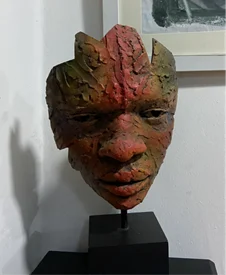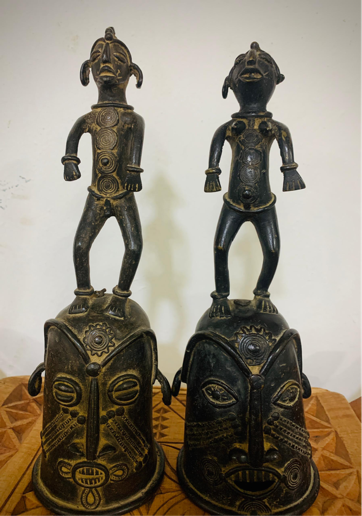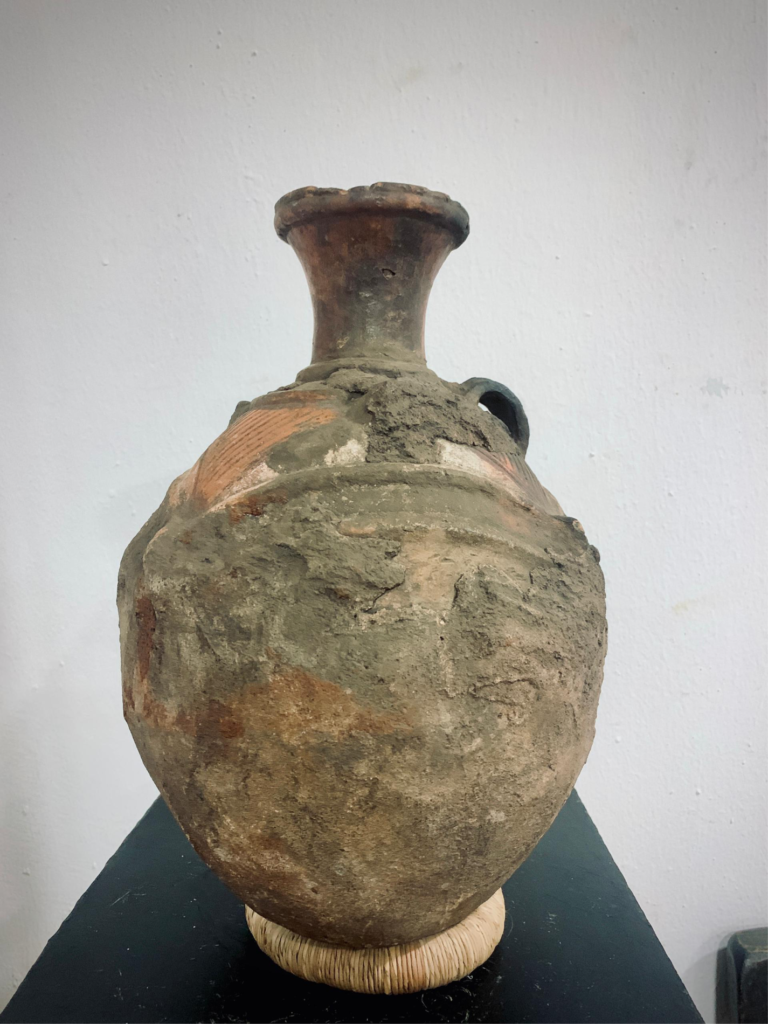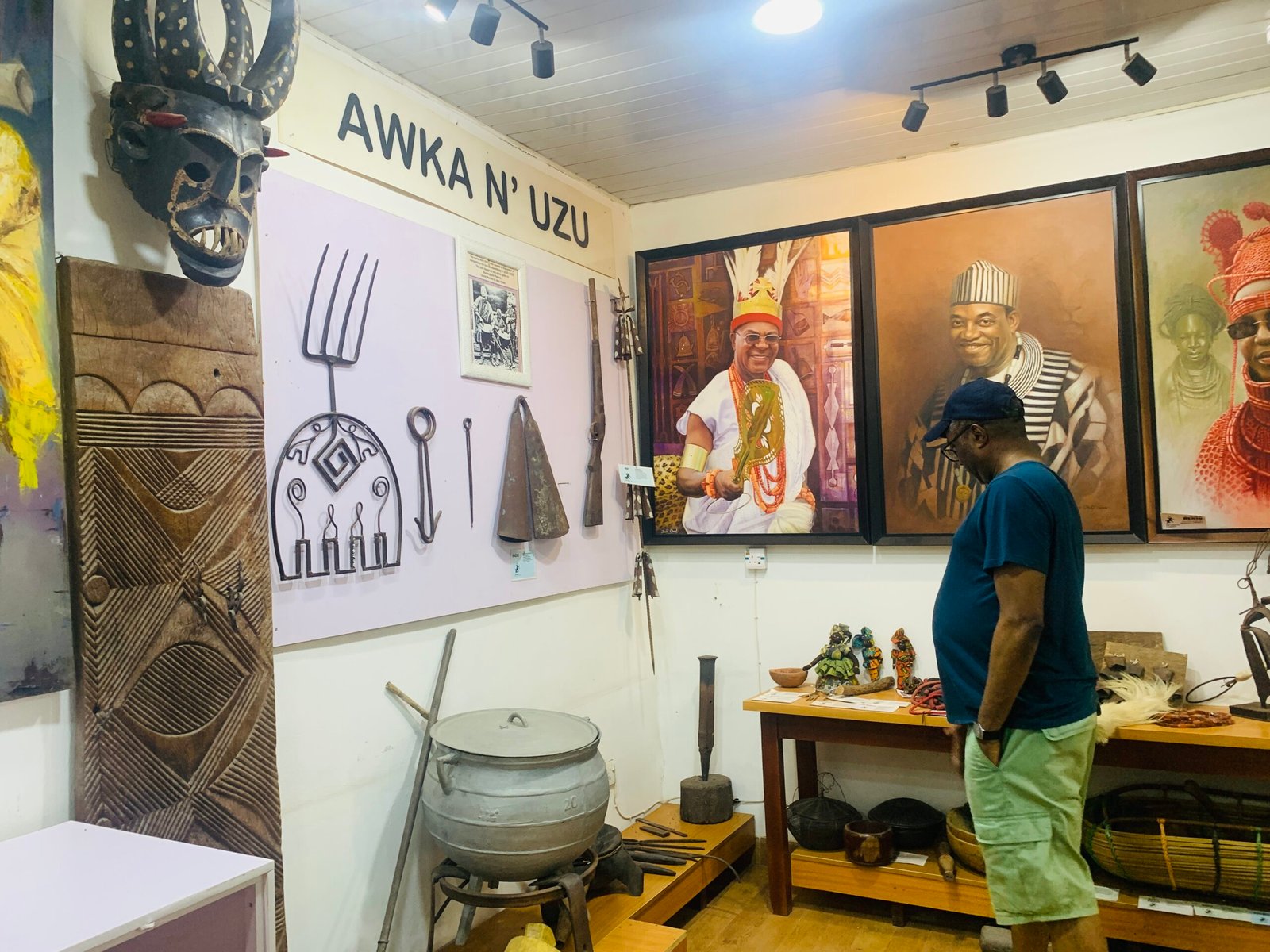Why Visiting a Museum Is More Than Just Sightseeing (A Nigerian study)
Abstract
Museums are often viewed as silent repositories for artifacts, artworks, paintings and relics, but their role in education extends far beyond mere sightseeing. Beyond their traditional role as exhibition spaces, museums educate visitors about history, science, art, and society in ways that textbooks cannot.
In Nigeria, a country with over 250 ethnic groups, museums play a crucial role in preserving our diverse heritage and educating both young and old about our past. However, with globalization and modern influences, many aspects of Nigerian culture are fading away. This article explores how museums contribute to learning and cultural preservation, highlighting their importance in reviving cultural consciousness among Nigerians, and why a visit to a museum is more than just a leisurely walk through history.



Introduction
Have you ever walked into a museum and felt like you were traveling back in time? Or imagine stepping into a room and coming face-to-face with a towering masquerade, an African sculpted work, or a painting that shaped an entire art movement. Museums have long been a staple of educational field trips, but their importance in the learning process is often overlooked. While many view museums as static collections of artifacts, they offer a unique and interactive learning experience that can enhance academic achievement, critical thinking, and cultural awareness. Museums bring history and culture to life in ways that no classroom lecture can. They are not just places to look at interesting objects; they are spaces where people can connect with the past, understand the present, and imagine the future. Whether it’s a science museum, an art gallery, or a cultural heritage site, museums offer an interactive and immersive learning experience that makes education fun and engaging.
In a world where information is just a click away, some may wonder if museums are still relevant. The answer is a resounding yes! Sadly, many Nigerians see museums as boring or irrelevant, and cultural traditions are slowly disappearing as younger generations embrace foreign lifestyles. This is why visiting museums should not just be an occasional school trip, it should be a regular activity that strengthens our identity and educates us about our past.
The Role of Museums in Learning
- Museums as Living Classrooms
One of the most powerful aspects of museums is their ability to act as living classrooms. Museums can break down complex subjects like history, science, and art into interactive and easy to understand exhibits. Unlike traditional education settings, museums engage multiple senses; visitors can see, hear, and sometimes even touch exhibits, making learning more impactful.
• Interactive Learning:
Some museums have hands-on exhibits where visitors can conduct science experiments, try historical tools, or use augmented reality to explore ancient civilizations. By presenting multiple perspectives and encouraging visitors to ask questions, museums promote critical thinking and problem-solving skills.
• Storytelling:
Every artifact, painting, or fossil has a story to tell. Museums use narratives to make history relatable, helping visitors understand the people and cultures behind the objects. For example, the National Museum in Lagos houses the famous Benin Bronzes, intricate works of art that tell the story of the powerful Benin Kingdom. Similarly, the Gidan Makama Museum in Kano showcases the traditional Hausa architectural style and historical relics from Northern Nigeria. These places provide first-hand knowledge that helps people appreciate Nigeria’s diverse history.
• Multi-sensory Experiences:
Seeing a historical document in person or walking through a reconstructed ancient village makes learning tangible and memorable.For students, museums complement classroom learning by providing
real-world examples of the subjects they study. A history book may describe medieval armor, but standing next to an actual suit of armor gives a completely different perspective. Schools are much more structured, whereas museums give visitors the freedom to move about at their own pace. This allows visitors to set their agendas. For example, visitors can often choose between text descriptions and audio tours, choose which exhibits interest them the most, and sometimes watch films that provide even more background on a work of art or artifacts. This offers kids a sense of agency to take charge of the way they learn. Developing personal agency is powerful, especially during childhood. It makes kids feel more in control and comfortable, which enforces a belief in their own abilities. Because of the agency that museums foster, education is much more subtle, yet just as poignant.
- Preserving Culture and Heritage
Museums do more than educate; they safeguard the past for future generations. They are the caretakers of history, preserving artifacts, documents, and traditions that might otherwise be lost thereby, ensuring their availability for future generations and providing a window into the past.
• Protecting Cultural Identity:
Museums house artifacts that tell the story of civilizations, from indigenous heritage to modern technological advancements. Nigeria’s traditional customs, languages, and art forms are gradually being replaced by Western influences. Many young Nigerians can name Hollywood celebrities but know little about their own cultural legends. Museums serve as cultural time capsules, preserving relics, stories, and traditions that might otherwise be lost. Take, for example, the Esie Museum in Kwara State, home to mysterious soapstone figures believed to be over 1,000 years old. These artifacts hold cultural significance and can inspire interest in indigenous beliefs and craftsmanship. Without museums, such priceless heritage could be destroyed, lost or forgotten.
• Conserving Fragile Artifacts:
Without museums, many historical items would deteriorate or be destroyed. Museums use advanced techniques to preserve these treasures for future study and appreciation.
• Passing Down Traditions:
Many museums work with local communities to document and showcase traditions, ensuring they are not forgotten in an increasingly globalized world. In recent years, there has been a growing movement to revisit aspects of Nigerian culture that have been forgotten, and museums play a crucial role in this. By organizing cultural festivals, interactive exhibitions, and storytelling sessions, museums create an environment where both children and adults can reconnect with their heritage. Imagine a museum where you can not only see Igbo Uli paintings but also learn how to make them. Or a Yoruba heritage center where visitors can try their hands at traditional bead-making. Interactive experiences like these make learning fun and encourage people to take pride in their roots.
By preserving history, museums help societies maintain a connection to their roots while also fostering respect and appreciation for diverse cultures.
3. Museums as a Gateway to Curiosity
One of the most underrated roles of museums is their ability to spark curiosity and inspire creativity. A visit to a museum can ignite a lifelong passion for history, science, or the arts.
• Encouraging Exploration:
A single visit can lead to new questions, encouraging visitors to research, learn, and think critically.
• Inspiring Future Innovators:
Many great scientists, artists, and historians credit museum visits with sparking their curiosity at a young age.
• Creating Personal Connections:
People often feel a strong connection to exhibits that relate to their ancestry, interests, or personal experiences.
For children, museums make learning feel like an adventure. Instead of
memorizing facts, they explore, interact, and discover knowledge in a way that feels like play.
4. Museums in the Digital Age
With the rise of digital technology, museums are evolving to stay relevant. Many now offer virtual tours, online exhibits, and interactive apps, making learning accessible to people who may not be able to visit in person.
• Augmented Reality (AR) and Virtual Reality (VR):
These technologies allow visitors to experience history in new ways, such as walking through a digital reconstruction of an ancient city.
• Online Access:
Museums provide digital archives, making rare artifacts available for study by anyone, anywhere in the world.
• Educational Programs:
Many museums offer workshops, webinars, and educational videos to engage learners beyond their walls.While technology cannot replace the magic of standing in front of an Bruce Onobrakpeya painting or touching a 1000 year old artifact, it does enhance accessibility and engagement. Beyond education, museums also attract tourists, boosting local economies and promoting Nigeria’s image globally. Countries like Egypt and Greece have successfully turned their historical artifacts into major tourist attractions, and Nigeria has the potential to do the same. With proper funding and promotion, sites like the Awka Museum Foundation, the Badagry Heritage Museum, and the Calabar Slave Museum could become must visit destinations, pulling both locals and foreigners eager to learn about Nigeria’s past.
Conclusion
A museum visit is far more than just sightseeing. It is an opportunity to step into history, explore different cultures, and ignite a passion for learning. Museums facilitate cultural exchange programs, exhibitions, and events, fostering global understanding and appreciation. Many museums elevate their educational missions by providing more formal learning experiences such as structured classes or learning sessions. Interacting with museum displays and information allows kids and adults alike to engage and enjoy an informal educational experience, while learning more about objects, culture, tradition and history. In fact, studies show that pre-school children spend about 80% of their waking hours engaged in informal learning outside of school settings.
In a rapidly modernizing world, Nigerians must take museums seriously as tools for education and heritage preservation. By visiting museums, participating in cultural activities, and encouraging younger generations to do the same, we can keep our traditions preserved and alive, ensuring that our rich history is not forgotten.
So, the next time you step into a museum, remember that you’re not just looking at objects, you’re engaging with stories, knowledge, and the shared heritage of humanity.
References
- National Commission for Museums and Monuments, Nigeria. https://museum.ng/about-us/
- Eyo, E. (1979). Two Thousand Years of Nigerian Art. Ethnographica.
- Fagg, B. (1990). Nok Terracottas. National Commission for Museums and Monuments.
- National Museum Lagos https://lagosmuseum.ng/about-us
- Esie Museum – https://en.wikipedia.org/wiki/Esiẹ_Museum
- American Alliance of Museums. (2020). Museums and Education.
- International Council of Museums. (2019). Museums and Cultural Heritage.
- National Museum of Natural History. (n.d.). Education and Outreach.
- Falk, J. H., & Dierking, L. D. (2013). The Museum Experience Revisited.
- Hein, G. E. (1998). Learning in the Museum.
- Hooper-Greenhill, E. (2007). Museums and Education: Purpose, Pedagogy, Performance.
- https://rentonprep.org/the-role-of-museums-within-education/
- https://www.aerospaceutah.org/educational-benefits-of-visiting-a-museum/
- Various museum websites and online educational platforms
Godwin ChukwudimmaChukwudihmma@gmail.com



